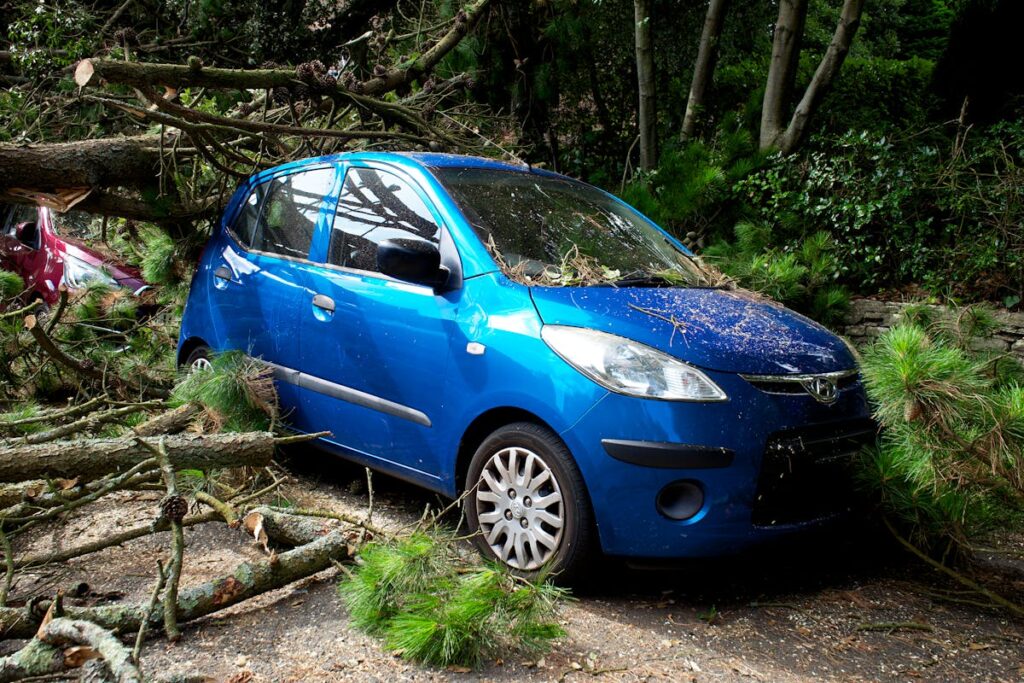The implications of California’s statute of limitations for car accidents are profound, affecting both personal injury and property damage claims. This legislation imposes a two-year limit for personal injury lawsuits and a three-year limit for property damage claims, starting from the accident date. The stringent timeframes necessitate swift action from victims, compelling them to collect evidence and pursue compensation expediently. If these deadlines are missed, claimants could face a permanent foreclosure of their claims. Understanding these limitations is essential for ensuring justice and safeguarding one’s rights— a topic that unquestionably warrants a deeper exploration.
Key Takeaways
- The general statute of limitations for car accident claims in California is 2 years for personal injuries and 3 years for property damage.
- The statute of limitations begins from the date of the accident, requiring prompt action for claims.
- Exceptions like tolling provisions and the discovery rule may extend the statute of limitations based on specific case circumstances.
- Different claims types include injury, property damage, medical expenses, and pain and suffering, which may require expert legal representation.
- The filing process involves submitting claims to insurance companies within the statute of limitations, along with gathering relevant evidence and documentation.
Understanding the Statute of Limitations
While it may seem complex, understanding the statute of limitations for car accidents in California is vital for anyone involved in such an incident. This legal timeline dictates the timeframe within which an accident victim can initiate legal proceedings. Failure to adhere to these guidelines can result in loss of rights to claim damages. The statute of limitations is not merely a legal concept; it is a critical instrument of justice. The clock starts ticking from the date of the accident, enforcing a sense of urgency and promoting efficiency in the legal process. Knowledge of this timeline guarantees that you take prompt action, protecting your rights and facilitating fair resolution. To navigate the legal maze of car accidents, comprehending the statute of limitations is paramount.
California’s Specific Time Limits
In California, specific time limits govern the filing of car accident claims, greatly impacting the course and outcome of injury claims. These time frames are not arbitrary but are steeped in legal precedent, aiming to guarantee a fair and efficient resolution process. However, certain exceptions to these rules exist, which, when appropriately invoked, can alter the conventional timeline.
Understanding the Time Limits
How does California’s statute of limitations impact car accident cases? It establishes strict time frames for gathering time sensitive evidence and preparing legal documentation. Significantly, California allows two years from the date of an accident for the injured party to file a personal injury lawsuit. For property damage, the time limit extends to three years. It’s essential to understand these limits; if a claim is not filed within these periods, your right to pursue legal remedies may be forever lost. The clock starts ticking from the date of the accident, making it imperative to act promptly. Comprehending these time limits can be the difference between securing a rightful compensation and forfeiting your claim entirely.
Impact on Injury Claims
Time constraints imposed by California’s statute of limitations undeniably play a significant role in car accident injury claims. These limitations directly influence the window of opportunity for victims to seek injury compensation. The prescribed two-year claim deadline from the date of the accident is non-negotiable, and courts are typically unsympathetic to claims filed outside this timeframe. As a result, understanding and adhering to these claim deadlines becomes essential for victims wishing to secure compensation. If not met, the right to compensation may be irrevocably lost. Hence, it’s vital to act promptly and decisively, aligning legal recourse with California’s specific time limits, to guarantee the best possible outcome in car accident injury claims.

Exceptions to the Rule
Despite the rigidity of the two-year deadline, California law does allow for certain exceptions to its statute of limitations in car accident cases. One such exception is tolling provisions, which can pause the limitations period under certain circumstances, such as when the injured party is a minor, mentally incompetent, or imprisoned. Another exception is the doctrine of equitable estoppel, which may apply if the defendant purposely misled the plaintiff, causing them to miss the filing deadline. These exceptions are not automatic, and their application depends on the specific facts of each case. It is advisable to consult with an experienced attorney to navigate these complex legal concepts and guarantee your legal rights are preserved.
Exceptions to the Rule
While California has established specific time limits for filing a car accident claim, certain exceptions can influence these deadlines. It is essential to understand these legal exceptions as they can greatly impact when and how you may file your claim. In the following discussion, we will elucidate these exceptions and explore their implications on claim filing.
Understanding Legal Exceptions
Are you under the impression that all cases related to car accidents in California must adhere strictly to the state’s statute of limitations? This is not entirely accurate due to the presence of legal exceptions. These exceptions can alter the timeline considerably based on the specific circumstances of a case. To understand legal definitions, take the ‘discovery rule,’ which allows the statute to commence when an injury is discovered or should have been discovered. For instance, a case example could be an internal injury not evident until months after the accident. Hence, understanding these legal exceptions is essential before proceeding with your claim, as it could potentially extend the time you have to file your lawsuit.
Impact on Claim Filing
Maneuvering the legal landscape of car accidents in California can be intimidating, particularly when it comes to understanding the impact of exceptions on claim filing. These exceptions can greatly influence your claim preparation and the filing process. For instance, if the injured party was a minor at the time of the accident, the statute of limitations may be extended until they reach adulthood. Similarly, if the defendant leaves the state after the incident, the clock may be paused until they return. These exceptions may complicate your claim, but with careful preparation and understanding of the rules, you can navigate the filing process effectively. Remember, each case is unique and professional advice is invaluable in understanding these exceptions.
Impact on Insurance Claims
Understanding the California statute of limitations for car accidents is not just vital for potential lawsuits; it greatly affects insurance claims as well. The statute of limitations greatly impacts the claim process outlined in your insurance policy. If you fail to make a claim within the two-year window, insurance companies may refuse to cover the damages. This time frame starts from the date of the accident and applies to both personal injury and property damage claims. An early claim guarantees the insurance company can investigate while the evidence is fresh. Delaying could also risk policy cancellation or premium increases. Consequently, understanding and acting within the statute of limitations is critical for a successful insurance claim in California.
Legal Actions After the Deadline
Although the California statute of limitations for car accidents is two years, there may be exceptions and leeways that allow legal actions after the deadline. The court may consider factors such as delayed discovery of injury or fraud when evaluating cases with missed deadlines. However, these are not guaranteed and heavily depend on the specific circumstances surrounding the case, leaving the plaintiff at risk of detrimental legal consequences. It is vital to act swiftly and within the given timeframe to guarantee the protection of your legal rights. Engaging a competent attorney right after the accident can help avoid such predicaments. Neglecting the deadline might result in the loss of the right to claim compensation, emphasizing the importance of timely legal action.
Role of a Car Accident Attorney
Maneuvering the complex waters of car accident claims can be intimidating, and that’s where a professional car accident attorney steps in. Their expertise in car accident representation is invaluable in understanding the intricacies of California’s statute of limitations. They provide detailed legal consultation, guiding victims through the process of filing claims within the stipulated timeline, ensuring that important details aren’t overlooked. An attorney can also adequately assess the damages incurred, providing realistic expectations of the potential compensation. They advocate for the victim’s rights, negotiating with insurance companies to secure the maximum possible settlement. Hiring a car accident attorney can make the difference between a successful resolution and a missed opportunity for proper compensation.
Injury Claim Vs Property Damage Claim
Maneuvering the aftermath of a car accident involves not only understanding your rights but also distinguishing between the types of claims that can be filed. Injury claims and property damage claims fall under this purview, each with its unique nuances. Injury claims, as the term suggests, seek injury compensation for any physical harm suffered due to the accident. This can include medical bills, rehabilitation costs, and compensation for pain and suffering. On the other hand, property damage claims are filed to regain the cost of repairing or replacing damaged property, typically your vehicle. Understanding these differences is essential for obtaining rightful compensation in California, guided by its specific Statute of Limitations for car accidents.
Frequently Asked Questions
What Is the Process for Filing a Car Accident Claim in California?
Initiating a car accident claim in California involves insurance negotiations, filing necessary legal documentation, and adhering to specified timelines. It’s crucial to navigate this process promptly and accurately to secure potential compensation.
Can Medical Bills Impact the Statute of Limitations for Car Accidents?
In general, medical expenses do not affect the statute of limitations for car accidents. Claim deadlines remain constant, regardless of the ongoing nature or cost of medical treatments resulting from the accident.
How Does Californias Statute of Limitations Compare to Other States?
Comparing statutes across states, California’s two-year limitation for car accidents is fairly standard. However, differences arise in specific circumstances and exceptions, underscoring the importance of understanding individual state laws for effective legal navigation.
What Happens if I Discover Injuries From the Accident After the Statute of Limitations Expires?
If injuries surface post-expiration of the statute of limitations, the “discovery rule” may apply, potentially extending the filing timeframe. However, it’s essential to seek legal counsel promptly to protect your injury claims rights.
How Does the Statute of Limitations Apply to Out-Of-State Drivers Involved in California Car Accidents?
The statute of limitations applies equally to out-of-state drivers involved in California car accidents. Jurisdiction issues may arise, but generally, the case must be filed within two years from the accident date.

